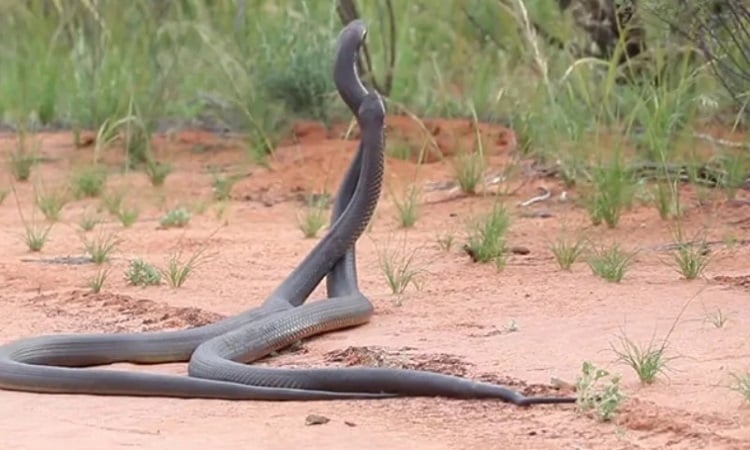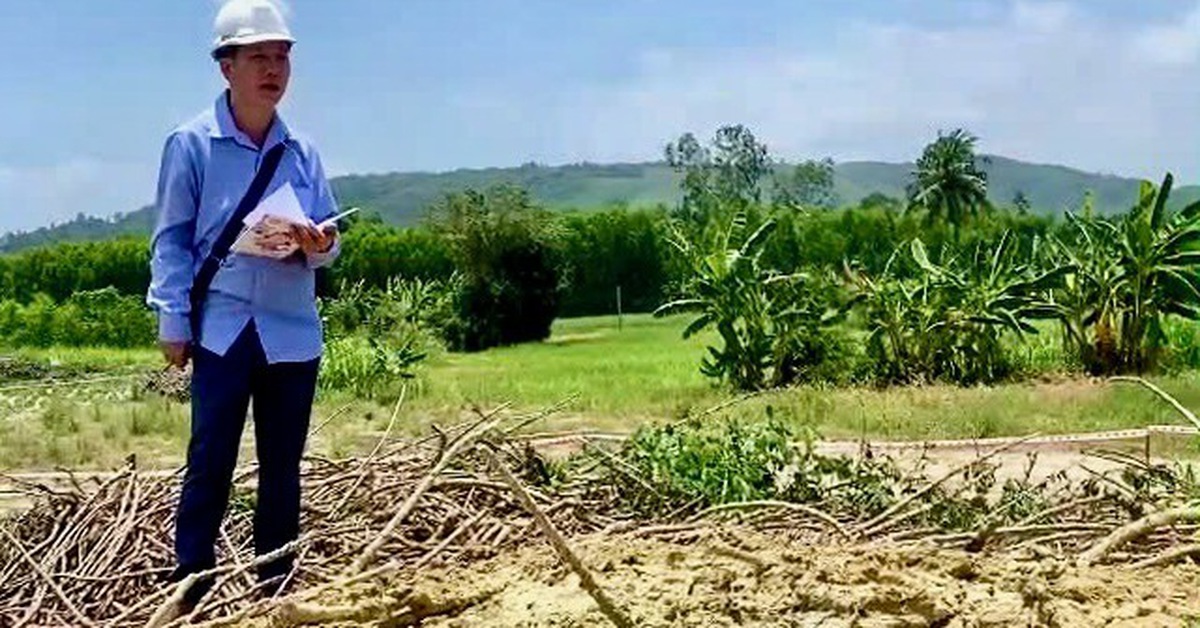South Africa Two male mambas exhausted from fighting over a mate were captured by snake catchers and taken away from residential areas.
The fight between two highly venomous black mambas. Video: Nick Evans
Two large black mambas were caught in a fierce fight in a Queensland, South African, yard. They fought for more than 30 minutes in an attempt to pin each other to the ground. The larger snake, measuring 2.6 metres (9.5 feet) long and weighing 300 kilograms (660 pounds), tried to strangle the smaller, 2.5-metre (8.5-foot) snake, snake catcher Nick Evans said on July 3. The fight was repeated three times before the smaller snake surrendered and fled. Evans then captured the exhausted pair and released them far from residential areas. He said they were likely fighting over a female snake during mating season.
Black mambas ( Dendroaspis polylepis ) don't bite each other when they fight, instead they wrestle until one of them surrenders. They are one of the most venomous snakes on Earth and the most dangerous in Africa, found in the east and south of the continent, according to John Dunbar, a postdoctoral fellow at the University of Galway in Ireland.
The black mamba's venom targets the nerve and muscle connections in its prey. The black mamba can quickly paralyze and kill a human in 20 minutes. However, they are shy and will only attack humans when they feel threatened.
Dunbar said the behavior in the video is called "plaiting combat" and only happens when a female snake is present. The name comes from the way black mambas coil around each other's bodies to gain the upper hand and win over a mate. Their goal is to win by forcing the other to submit.
Snakes also have immunity to their own venom. Exposure to venom during mating or feeding can trigger a mild immune response, in which the snake’s antibodies neutralize the toxin. This provides protection when bitten by another snake. However, snakes are not completely immune and can sometimes die from venom from a member of their own species if they are exposed to a high dose.
An Khang (According to Live Science )
Source link



![[Photo] Looking back at the impressive moments of the Vietnamese rescue team in Myanmar](https://vstatic.vietnam.vn/vietnam/resource/IMAGE/2025/4/11/5623ca902a934e19b604c718265249d0)

![[Photo] "Beauties" participate in the parade rehearsal at Bien Hoa airport](https://vstatic.vietnam.vn/vietnam/resource/IMAGE/2025/4/11/155502af3384431e918de0e2e585d13a)


























![[Photo] Summary of parade practice in preparation for the April 30th celebration](https://vstatic.vietnam.vn/vietnam/resource/IMAGE/2025/4/11/78cfee0f2cc045b387ff1a4362b5950f)






























































Comment (0)